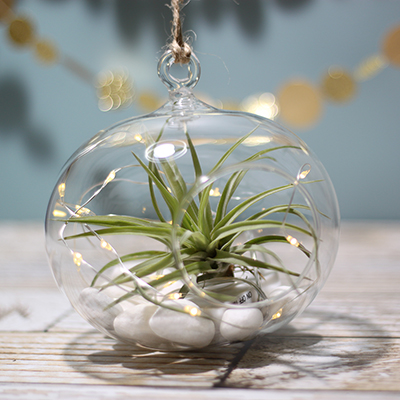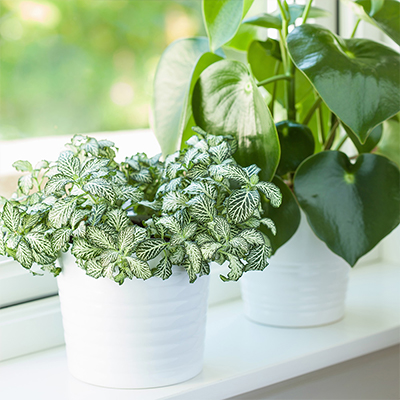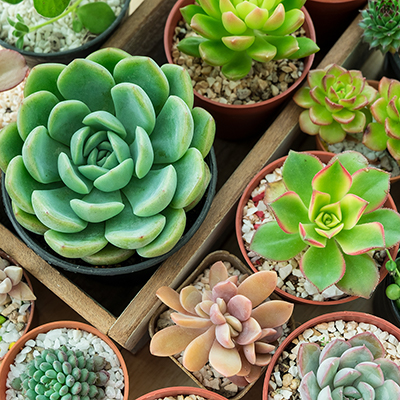Air Plant Care

Last updated September 7, 2023
Air plants are intriguing indoor plants that are easy to grow once you learn how to care for them. They are called air plants because they require no soil to grow and thrive. In this guide you will learn tips for taking care of air plants and how to keep them looking great.
Difficulty:
Beginner
Duration:
Under 2 hours
Table of Contents
What Are Air Plants?
Air Plants and Light
Watering Air Plants
Temperature for Air Plants
Fertilizing Air Plants
Aesthetics and General Tillandsia Care
What Are Air Plants?

Air plants, also known as Tillandsia, are a type of bromeliad found from the southeast United States through South America.
Air plants are epiphytes, plants that grow on the surface of another plant while deriving its moisture and nutrients from the environment (primarily air and rain.) The leaves of the air plant have specialized cells called trichomes that absorb water and nutrients through white hairs or fine appendages.
Most air plants have silver or green foliage. Silver leaves tend to have stiffer foliage, prefer more sunlight and require higher humidity. Greener leaf plants prefer shadier environments and require more water since they tend to dry out faster.
Air plants have a root system, but it is not functional. The roots are designed to secure the plant to tree branches in nature. The roots can be trimmed without harm to your air plant. In the home, air plants are often displayed in glass globes, shallow planters, terrariums or in large seashells. They can also be mounted on wood or rocks using wood glue.
Air Plants and Light
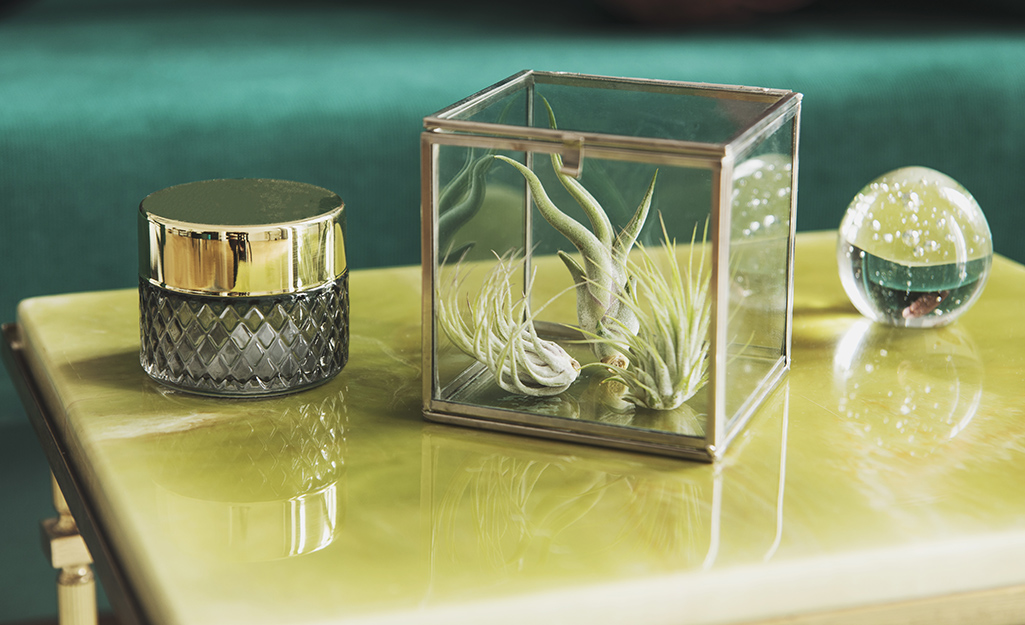
Air plants can be positioned anywhere in the home, but they prefer bright indirect sunlight. They can handle short periods of direct sunlight, but more than a few hours of hot sun will deplete the plants of their moisture.
Watering Air Plants
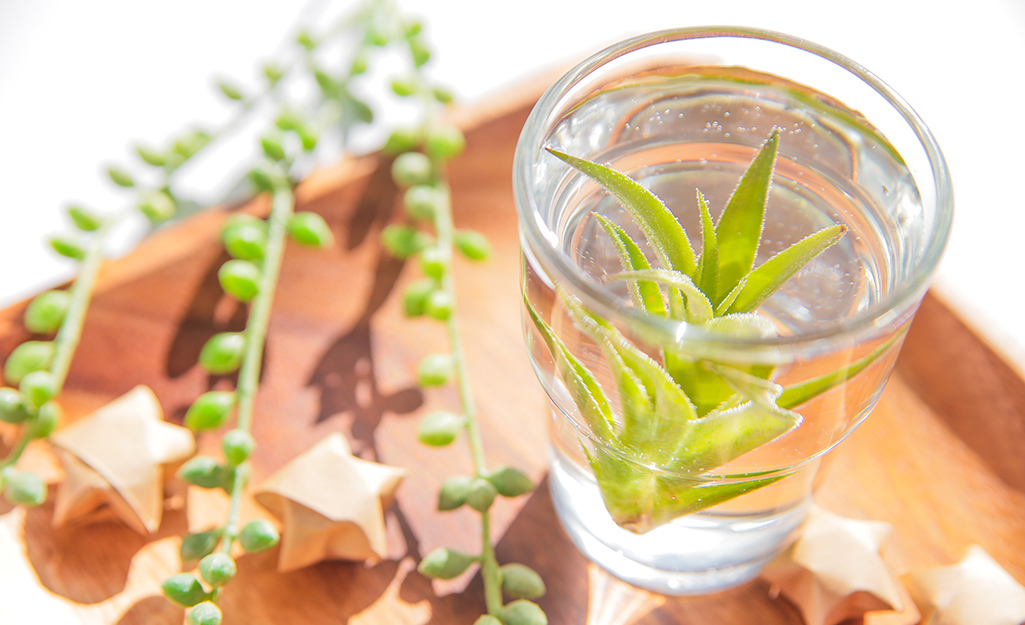
Air plants may not need soil, but they do need water. The plants can survive for long periods without water, but they will not thrive and will eventually die. Watering air plants is easy. The easiest method is soaking air plants in a bowl of water.
- Fill a bowl or sink with tepid water.
- Submerge the air plant in the water and let it soak for 20 to 30 minutes.
- After they are hydrated, gently shake the plants to remove any excess water from the base and the leaves.
- Set them out to dry in an area with enough air circulation. The plant must be completely dry to avoid mold — this can take four hours and even overnight.
How can you tell if an air plant needs to be watered? The plants will get lighter in color and the leaves will curl in when it is getting too dry. If your plants need an in-between watering, misting them with a spray bottle is a great method. Air plants need to be watered once a week at a minimum, but for optimum growth, water them two to three times per week.
Temperature for Air Plants
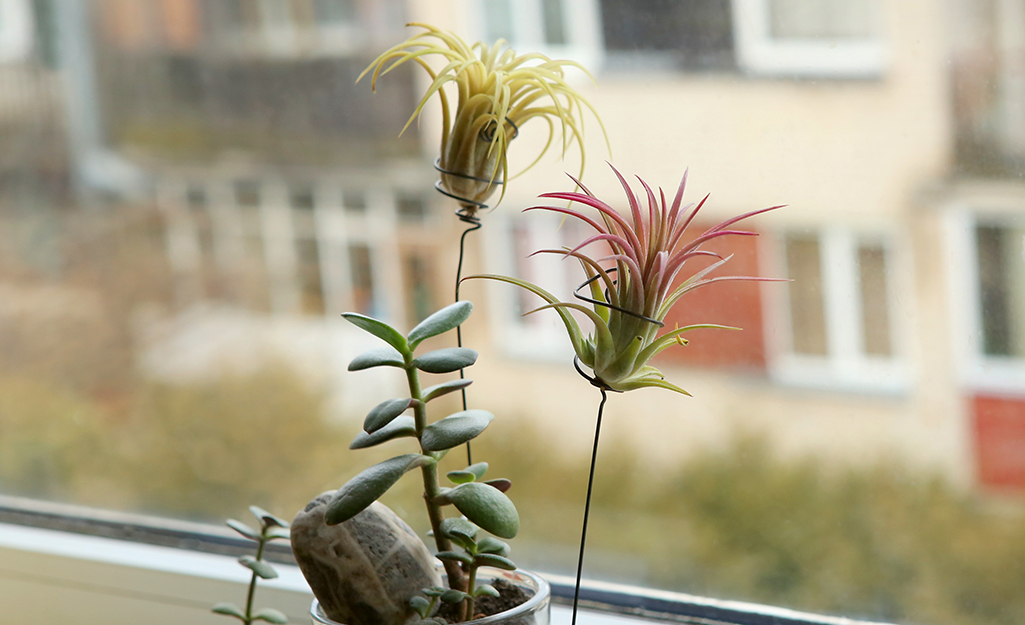
Air plants will do best in generally warm conditions — around 50 to 90 degrees Fahrenheit. If you live in a warm region that does not get frost, the plants can even live outside for the entire year. You can set them outside on a porch or balcony in warm weather, but don't expose the air plants to temperature or sun extremes.
Fertilizing Air Plants
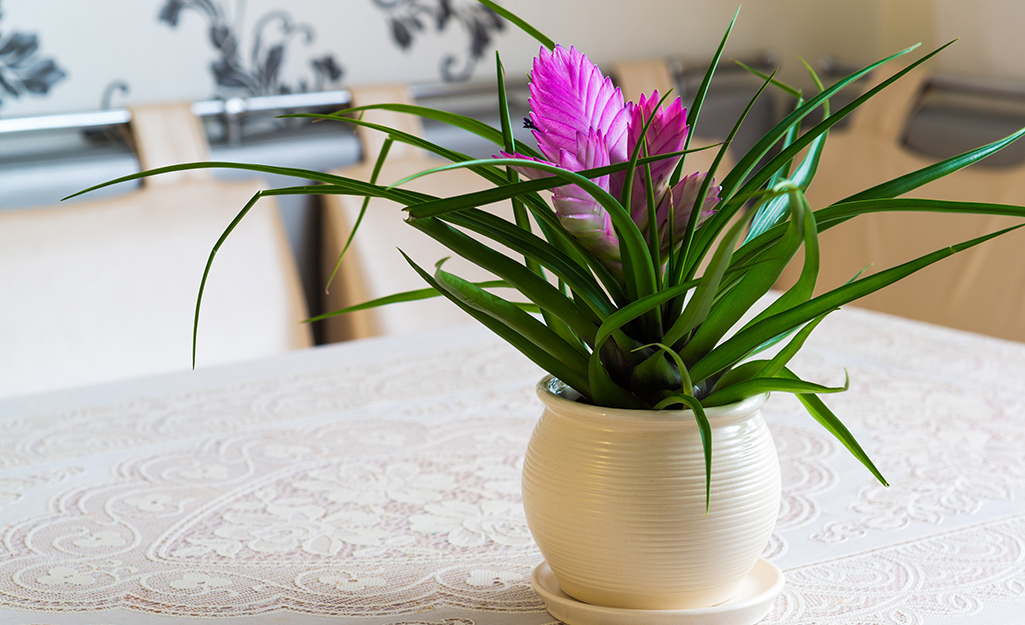
Fertilizing air plants is not necessary but doing so keeps them in shape and promotes blooming and reproduction. Getting your air plant to bloom requires plenty of light and a diluted fertilizer in the soaking water monthly. The bloom will start as a bud, which will open to reveal the flower; flowers can last from several day to several weeks.
Larger plants tend to have longer bloom cycles. You will need to continue to mist and soak the plant while in bloom. For the safety of the bloom, dunk the plant and carefully hang to dry. Avoid getting the bloom wet or it could wilt or rot. Once blooming is over, gently snip the bloom tract from the air plant.
You may also begin to see several small offset plants growing from the side of your plant. These are babies commonly called pups. When the pups grow to about a third of the size of the mother plant, gently remove them to start new plants. You can also leave the pups on the mother plant to form a clump of air plants. The mother plant will not bloom a second time and remain as foliage for the rest of its life.
Aesthetics and General Tillandsia Care
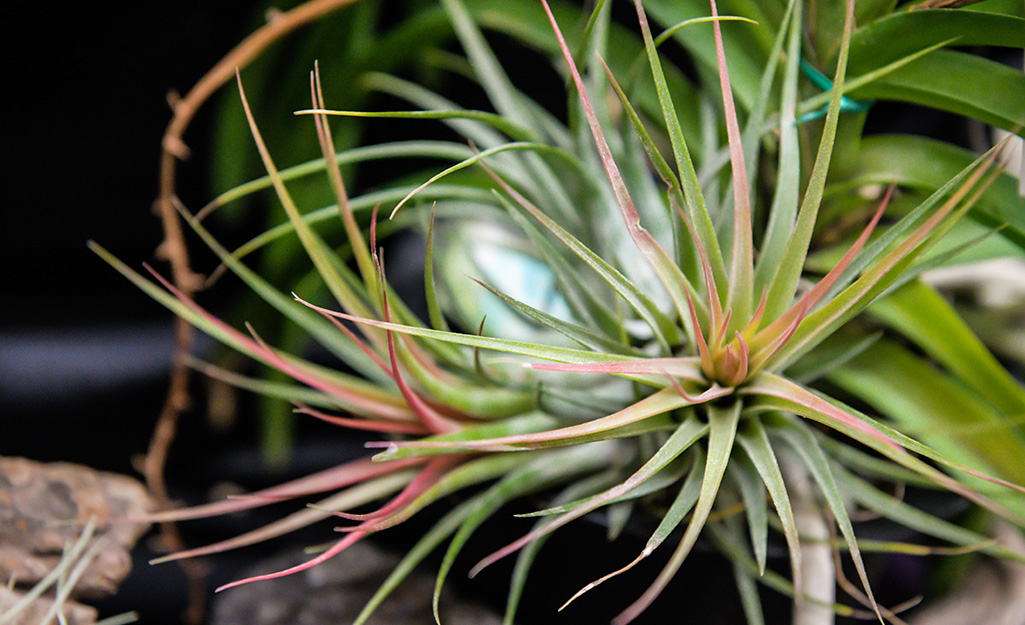
All plants need a little grooming to stay healthy. It’s normal for some of the lower leaves on a Tillandsia to dry out as the plant grows. Those leaves can be gently pulled right from the plant. If the leaf tips have dried out, you can snip the dried tip off.
All indoor plants can be attacked by a variety of harmful insects, including scale and mealy bugs. Inspecting your plants when soaking and monitoring when misting will allow you to stop any infestation early on. Any plant being treated should be quarantined from other plants. The other plants should be monitored and treated if needed.
Tillandsia are not toxic and are safe around children and pets. However, to protect the plant’s delicate leaves, it’s best to keep them out of reach for everyone’s safety.
Displaying Air Plants
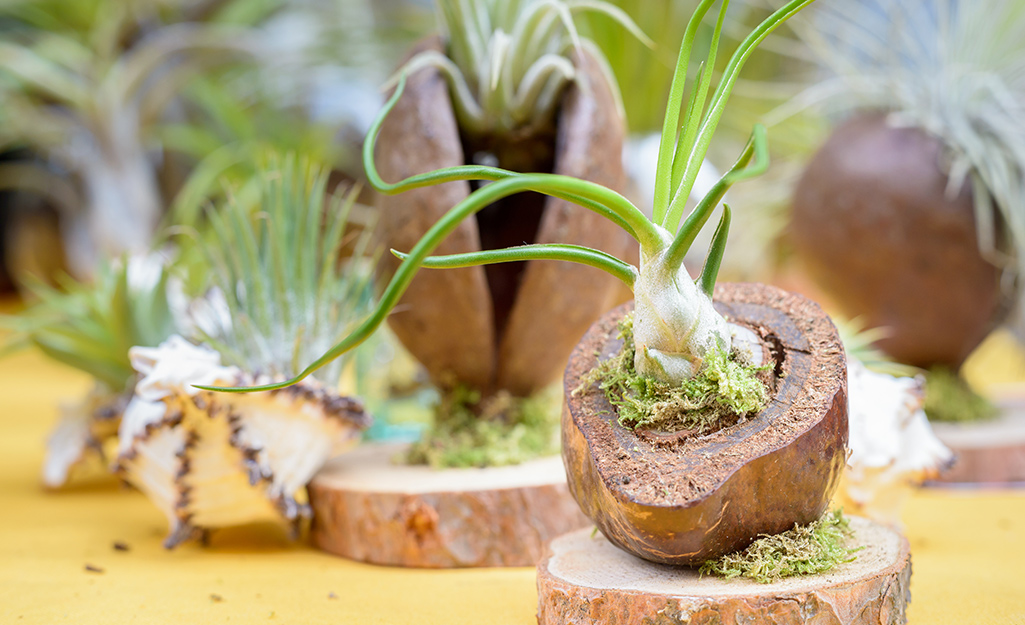
Displaying air plants can be as exciting as purchasing them. Larger spaces may dictate the need for a larger plant for proper proportion.
Consider creating a centerpiece with completely different types of air plants or display multiples of the same plant on a tray or piece of driftwood as well as in an open terrarium. Avoid displaying your plant in a copper container or using copper wire to mount it. Do not attach your air plant to pressure-treated wood that contains copper. Also, avoid using cyanoacrylates or super glues to attach your air plant. Air plants can also be displayed in glass globes that hang from vertical structures.
Air plants are wonderful house plants that will bring a unique aesthetic to your home. They are low maintenance, needing little more than adequate sunlight and hydration. Download The Home Depot Mobile App to shop for and buy everything you need for air plant care, including planters, fertilizers and more.

